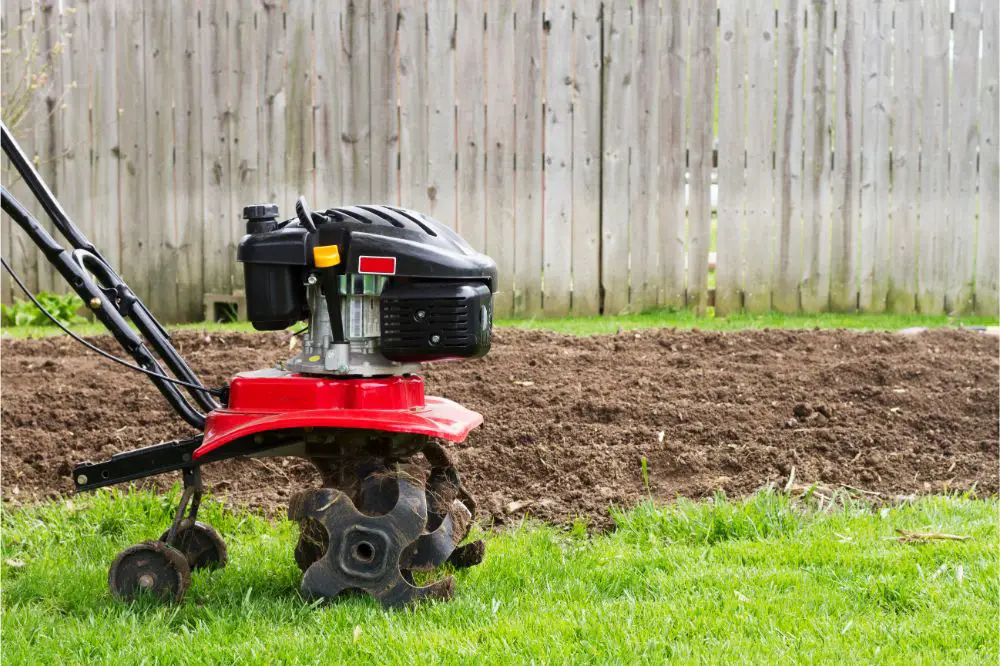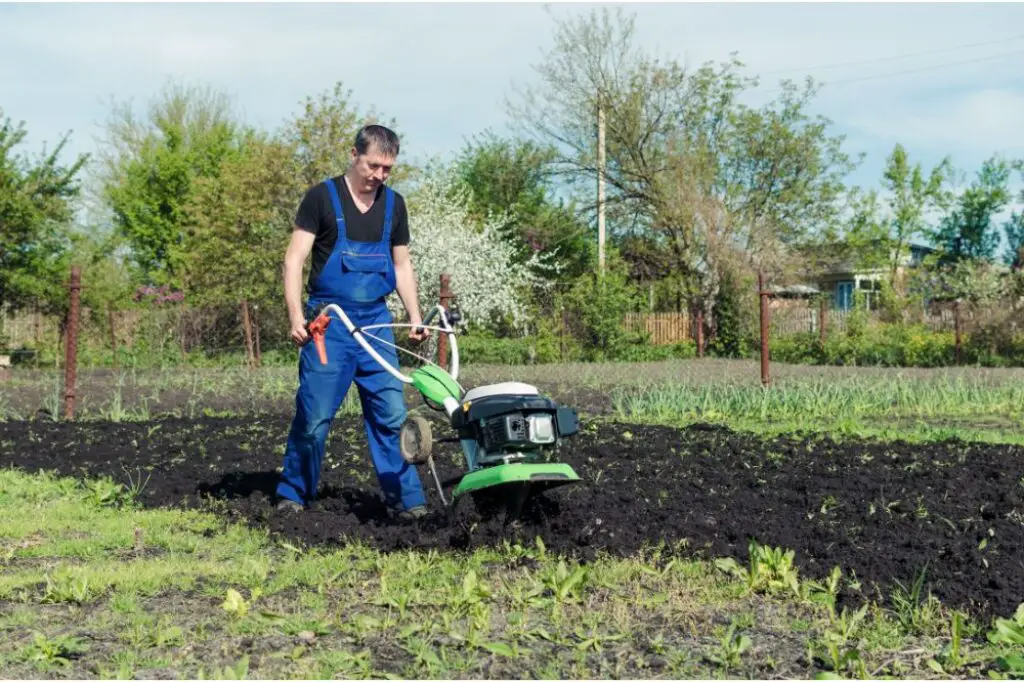GardenerHeaven.com is reader-supported. When you buy through links on our site, we may earn an affiliate commission.

The basis of any good, productive garden is the care and quality of the soil. Whether you are planting flowers, fruits, or vegetables, the garden should always be rich and fertile. During planting season, a garden tiller is a great way to prepare the soil. This article will be going through what a tiller is and the various garden tiller options on the market to help you in your planting. So let’s get right into it.
Garden Tiller Varieties
Garden tillers are designed to offer the best value to the customer, as such, they come in a whole set of differences. The most powerful variant is the rear-tine option. These tilers are typically on the larger side with a width of about 12 to 24 inches and run on a gas engine. Their best use case is breaking up the soil on the ground that has never been tilled.
On the other hand, front-tine tillers have a width that ranges between 12 and 36 inches and typically run on a smaller gas engine. Compared to the rear-tine options, they do not have as much power. This option is best used on gardens that have already been in use.
A cultivator is the smallest option for those in need of a tiller. These can either run on electricity or be gas-powered. They are typically narrow, especially when compared to other types of tillers. This allows them to find use when turning soil that exists close to other plants and can be used to get rid of weeds.
Which Tiller Tines are Best for You?
Most garden tillers will have four blades that are curved in opposite directions. There are two outward blades that cut the soil, and the inward ones move the soil away from the tool to avoid clogging.
As you keep using the tiller, you will familiarize yourself with basic repairs, and you will be able to change out the blades. You can have pick and chisel tines that are the best in breaking and splitting hard and rocky soils. You can also use slasher tines, which are best for clearing vegetation, often with deep roots.
This adds a new level of versatility that allows the Garden Tiller to switch out the blades of their machine to best suit their uses.
Uses of a Garden Tiller
Garden tillers have a wide range of functions when getting ready for planting. They can be used to plow, crumble down soil, hoe, and even weed the garden. By breaking up the soil into smaller pieces, the garden tiller helps improve the aeration of the ground. Garden tillers can be used to loosen the soil underneath the topsoil; this helps the plants’ roots develop a lot faster and deeper into the earth.

Best Time to Use a Garden Tiller
There are a few things to always have in mind when you decide to use your garden tiller. Make sure not to use the garden tiller when the land is very wet; this will result in the soil becoming more compact as it forms large clumps when it eventually dries up.
Typically autumn and spring are usually the best time to use your garden tiller. However, to get the best results, it’s best to use it one or two days after it rains. If the soil is dry and it has not rained recently, you could use sprinklers or a hose to add water to the ground a couple of days before you begin working in the garden. To gauge the soil’s moisture level, grab a handful of soil and squeeze it; if it crumbles, the soil should be ready to be tilled.
Ensure the Soil is Prepared
Before you begin working with the garden tiller to prepare the land, ensure you get the best out of it. For larger gardens, you should go through the garden and remove any large stones. These stones could damage the garden tiller when it comes into contact with it.
When creating a garden, it is important to ensure no underground lines are going through the garden. As for weeds, the garden tiller can handle the smaller weeds. For the larger weeds, you should go through the garden and uproot them by hand.
How to Properly use a Garden Tiller
When using a garden tiller, make sure you do not dig too deep on the first pass. This should be the case even when working with ground that has never been tilled before. Instead, you should do two different passes on the soil. These passes should be in the opposite direction to get the most out of your tiller.
Use the depth regulator on the tiller on the first pass. Make sure it is on the right setting instead of trying to press down harder on the machine to get even more depth. If the ground is softer, it is best to have the tiller on the medium setting.
Since the garden tiller propels itself forward by design, you shouldn’t exert too much effort pushing it forward. Instead, you should only try to keep the tiller moving in a straight line. To ease movement, sway the handlebars slightly from left to right. Continue making passes on the soil until it has been broken down to a depth of about 8 inches.
Safety First
A garden tiller, when not properly used and maintained, can be very dangerous. Garden tillers, particularly the larger ones, can be very powerful. When considering these machines also feature very sharp blades, it is important to read the manual and safety precautions before working with the machine.
Additionally, you should always wear proper safety gear when working with the machine. Always have on long pants, shirts with sleeves, boots, and even proper eye protection.
Conclusion
For gardeners, a good garden tiller is an invaluable machine in breaking up the soil to ready the ground for planting. When the planting season begins, make sure to follow these steps to get the most out of your garden.




